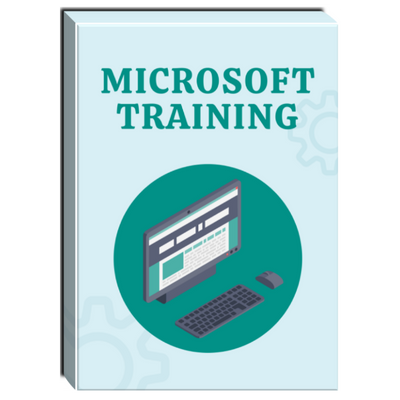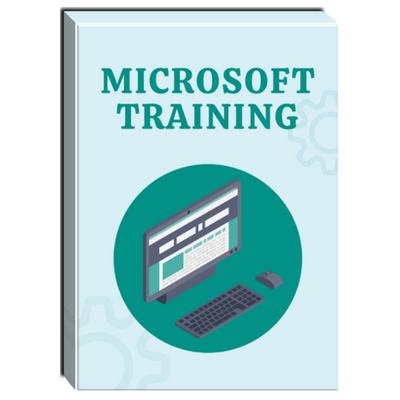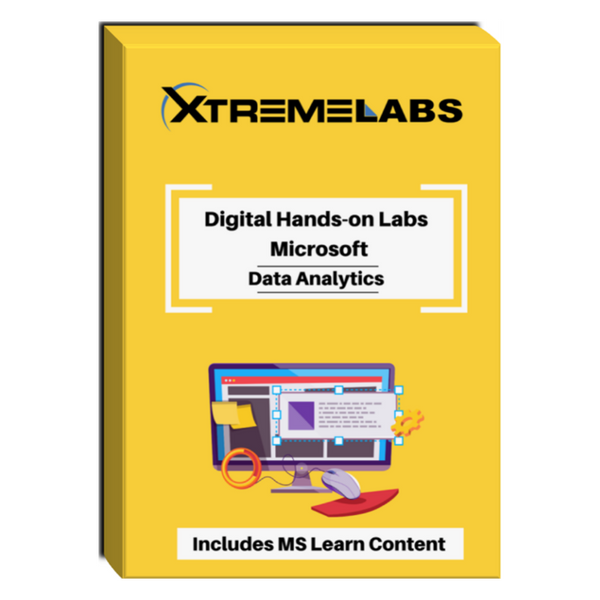Tags: Training
PL-300: Microsoft Power BI Data Analyst Self-Paced Training
- Brand: Nanfor Iberica
- Availability: In Stock
$763.00
This course will discuss the various methods and best practices that align with business and technical requirements for modeling, visualizing, and analyzing data with Power BI. The course will also show how to access and process data from a variety of data sources, including relational and non-relational data. This course...
This course will discuss the various methods and best practices that align with business and technical requirements for modeling, visualizing, and analyzing data with Power BI. The course will also show how to access and process data from a variety of data sources, including relational and non-relational data. This course will also explore how to implement proper security standards and policies across the full spectrum of Power BI, including datasets and groups. The course will also discuss how to manage and implement reports and dashboards to share and distribute content.
Audience Profile
The audience for this course are data professionals and business intelligence professionals who want to learn how to accurately perform data analysis using Power BI. This course is also for those who develop reports that visualize data from data platform technologies that exist both in the cloud and on-premises.
Items in this Collection
- Description of data analysis (6 Units)
- Introduction to building with Power BI (6 Units)
- Obtaining data in Power BI (12 Units)
- Cleaning, transformation and loading of data in Power BI (10 Units)
- Design a data model in Power BI (10 units)
- Introduction to creating measures with DAX in Power BI (10 units)
- Optimize a model for performance in Power BI (8 Units)
- Using Power BI visuals (10 units)
- Create a data-driven story with Power BI reports (15 Units)
- Creating Dashboards in Power BI (11 Units)
- Performing analysis in Power BI (12 Units)
- Working with AI visuals in Power BI (7 Units)
- Creating and managing workspaces in Power BI (8 Units)
- Managing data sets in Power BI (11 Units)
- Row Level Security Implementation (5 Units)
Course Outline
Module 1: Introduction to Microsoft Data Analytics
This module explores the different roles in the data space, outlines the important roles and responsibilities of a data analyst, and then explores the Power BI portfolio landscape.
Lessons
- Data Analytics and Microsoft
- Introduction to Power BI
After completing this module, learners will be able to:
- Explore the different roles in data
- Identify the tasks that a data analyst performs
- Describe the Power BI product and service landscape
- Use the Power BI service
Module 2: Obtaining data in Power BI
This module explores the identification and retrieval of data from various data sources. You'll also learn data storage and connectivity options, and understand the difference and performance implications of connecting directly to data versus importing it.
Lessons
- Data Analytics and Microsoft
- Optimize performance
- Resolution of data errors
Lab: Preparing data in Power BI Desktop
- Data preparation
After completing this module, learners will be able to:
- Identify and retrieve data from different data sources
- Understand connection methods and their performance implications
- Use Microsoft Dataverse
- Connect to a data stream
Module 3: Clean, transform, and load data into Power BI
This module teaches you the profiling process and understanding the state of the data. They will learn to identify anomalies, observe the size and shape of their data, and perform the appropriate data cleaning and transformation steps to prepare the data for loading into the model.
Lessons
- Data modeling
- Data profiling
- Improve data structure
Lab: Loading data into Power BI Desktop
- Load data
After completing this module, learners will be able to:
- Apply data shape transformations
- Improve data structure
- Profiling the data and examining it
Module 4: Design a data model in Power BI
This module teaches the fundamental concepts of designing and developing a data model for proper performance and scalability. This module will also help you understand and address many common data modeling issues, including relationships, security, and performance.
Lessons
- Introduction to data modeling
- Work with tables
- Dimensions and hierarchies
Lab: Data modeling in Power BI Desktop
- Create Model Relationships
- Setting table and column properties
- Create hierarchies
After completing this module, learners will be able to:
- Understand the basics of data modeling
- Define relationships and their cardinality
- Implement dimensions and hierarchies
Module 5: Creating model calculations with DAX in Power BI
This module introduces you to the world of DAX and its true power to improve a model. You will learn about aggregations and the concepts of measures, calculated columns and tables, and time intelligence functions to solve calculation problems and data analysis.
Lessons
- Introduction to DAX
- Dashboards in real time
- Advanced DAX (Advanced DAX)
Lab: Introduction to DAX in Power BI Desktop
- Create calculated tables
- Create calculated columns
- Create measures
Lab: Advanced DAX in Power BI Desktop
- Using the CALCULATE() function to manipulate the filter context
- Use time intelligence functions
After completing this module, learners will be able to:
- Understanding DAX
- Using DAX for simple formulas and expressions
- Create tables and calculated measures
- Build simple measures
- Work with time intelligence and key performance indicators
Module 6: Optimizing model performance in Power BI
In this module, you are introduced to the data modeling steps, processes, concepts, and best practices required to optimize a data model for enterprise-level performance.
Lessons
- Optimizing the data model for performance
- Optimize DirectQuery models
After completing this module, learners will be able to:
- Understand the importance of variables
- Improve the data model
- Optimize the storage model
Module 7: Creating reports in Power BI
This module introduces you to the fundamental concepts and principles of designing and creating a report, including selecting the correct visual elements, designing the page layout, and applying basic but critical functions. The important issue of design for accessibility is also discussed.
Lessons
- Design a report
- Improve report
Lab: Improving reports with interaction and formatting in Power BI Desktop
- Create and configure targeting synchronization
- Create a drillthrough page
- Apply conditional format
- Create and use bookmarks
Lab: Designing a report in Power BI Desktop
- Design a report
- Configure visual fields and format properties
After completing this module, learners will be able to:
- Plot a report page layout
- Select and add effective visualizations
- Add basic report functionality
- Add navigation and report interactions
Module 8: Creating dashboards in Power BI
In this module, you'll learn how to tell a compelling story by using dashboards and the different navigation tools available to provide navigation. You will be introduced to features and functionality and how to improve dashboards for usability and insights.
Lessons
- Create a Dashboard
- Dashboards in real time
- Improve a dashboard
Lab: Creating a dashboard in the Power BI service
- Create a Dashboard
- Pin visuals to a dashboard
- Use Q&A to create a dashboard tile
After completing this module, learners will be able to:
- Create a Dashboard
- Understand dashboards in real time
- Improve the usability of a panel
Module 9: Identifying Power BI Patterns and Trends
This module helps you apply additional features to enhance the report to gain analytical insights into the data, giving you the steps to use the report for real data analysis. It will also perform advanced analytics using AI images on the report to gain even deeper and more meaningful data insights.
Lessons
- Advanced analysis
- Insights about data through AI visuals
Lab: Analyzing data in Power BI Desktop
- Create Animated Scatter Plots
- Use the visual to forecast values
After completing this module, learners will be able to:
- Using the Analyze feature
- Identify outliers in data
- Use the AI visuals
- Use the advanced analytics custom visual
Module 10: Creating and managing workspaces in Power BI
This module will introduce you to workspaces, including how to create and manage them. You'll also learn how to share content, including reports and dashboards, and then you'll learn how to distribute an app.
Lessons
- Create work areas
- Sharing and managing resources
After completing this module, learners will be able to:
- Creating and managing a workspace
- Understanding collaboration in the workplace
- Monitor workspace usage and performance
- Distribute an app
Module 11: Managing files and data sets in Power BI
In this module you will see the parameters and data sets. You'll also learn how to manage datasets and parameters, create dynamic reports with parameters, and set dataset refresh options.
Lessons
- Parameters
- Data sets
After completing this module, learners will be able to:
- Parameter and data set management
- Creating dynamic reports with parameters
- Scheduling data set updates
- Troubleshooting Gateway Service Connectivity
Module 12: Row-level security in Power BI
In this module you will see row level security, static and dynamic methods and how to implement them.
Lessons
- Security in Power BI
Lab: Applying Row Level Security
- Configuring many-to-many relationships
- Apply row level security
After completing this module, learners will be able to:
- Implementing row-level security using the Static and Dynamic methods
Previous Requirements
Qualified data analysts enter this role with experience working with data in the cloud.
Concretely:
- Understanding of basic data concepts.
- Knowledge of how to work with relational data in the cloud.
- Knowledge of how to work with non-relational data in the cloud.
- Knowledge of data visualization and analysis concepts.
You can meet the prerequisites and better understand how to work with data in Azure by completing the data basics of Microsoft Azure Data Fundamentals before taking this course.
Course is available in both English and Spanish.
Labs are available in English.
Student Access: 90 Days



